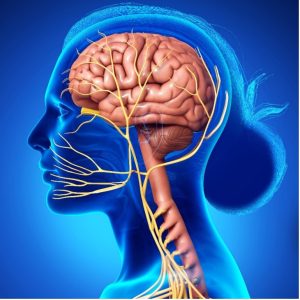Exploring facial sensitivity

By: Lilach Erez, Clinical Manager at Pollogen
Embarking on the ENVIG-EDGE journey, you may encounter gentle tingling and a comforting warmth as you apply the ENVIG-EDGE head. The treatment is designed to be adaptable, allowing you to personalize the experience by adjusting the intensity levels. Different parts of your face exhibit varying sensitivity, so this tailored approach ensures a soothing and customized encounter perfectly attuned to your unique requirements.
Delving into the Spectrum of Sensation:
(Depositphotos)
Facial sensitivity isn’t uniform across every area due to a medley of factors:
Nerve Network: Your face boasts an intricate network of nerve endings that facilitate the perception of touch, pressure, temperature, and even pain. These nerves convey signals to your brain, furnishing information about your sensory experiences.
Sensory Marvels: Your facial skin houses an array of sensory receptors. Mechanoreceptors discern touch and pressure, thermoreceptors respond to temperature shifts, while nociceptors identify pain and potential tissue damage.
Sensory Cartography: Within your brain, there’s a designated region known as the sensory cortex. This realm processes sensory input from distinct body parts. Remarkably, your face is considerably present in this realm, signifying that specific brain areas specialize in interpreting facial sensations compared to other bodily regions. This specialization contributes to the unique tactile perceptions you encounter on your face.
Fusion of Senses: Your brain amalgamates diverse sensory inputs to generate a holistic perception of your facial experiences. Touch, for instance, interacts with vision and proprioception (body position awareness) to create a comprehensive sensory tapestry.
Vascular Fluctuations: Temporary shifts in blood circulation, such as blushing or flushing, can also influence facial sensations. These changes can arise from emotions, temperature fluctuations, or medical conditions.
ENVIG-EDGE Treatment: An Adaptive Beauty Solution
The ENVIG-EDGE treatment is a versatile beauty tool with three energy levels, offering a downtime-free post-treatment experience. Notably, it caters to a broad spectrum of skin types, ranging from the more sensitive to the less sensitive.

References:
Sanders, R. D. (2010). The trigeminal (V) and facial (VII) cranial nerves: head and face sensation and movement. Psychiatry (Edgmont), 7(1), 13.
Tian, X., Xu, R., & Liu, W. (2023). Facial skin temperature and overall thermal sensation of sub-tropically acclimated Chinese subjects in summer. Journal of Thermal Biology, 112, 103422.
Jin, T., Pan, L., Zhao, Y., Wu, S., & Sun, Y. (2022). Treatment of sensitive skin by short‐wave radiofrequency combined with intense pulsed light. Journal of Cosmetic Dermatology, 21(11), 5709-5715